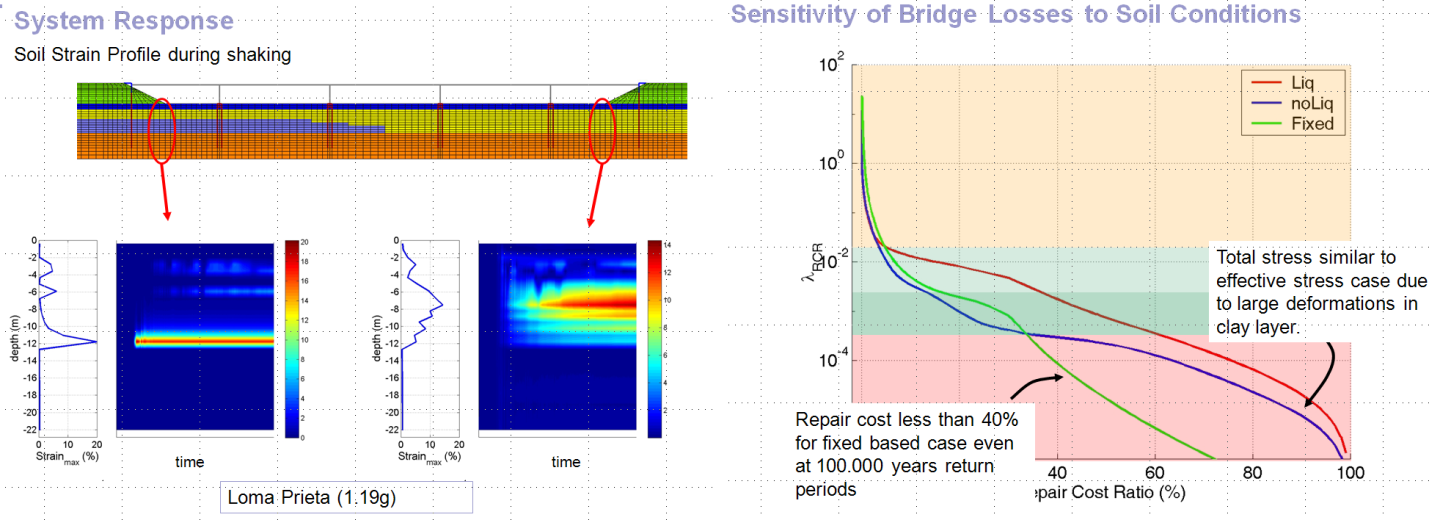Research
Performance-Based Evaluation of Bridges on Liquefiable Soils using OpenSees
Participants: Hyung-Suk Shin, Steven L. Kramer and Pedro Arduino
By virtue of their locations, bridges that cross bodies of water are particularly likely to be damaged by lateral spreading of liquefied soils. The behavior of these soils can cause unusual forms of seismic demands on bridges and their foundations, ranging from rapid modifications of input motion amplitudes and frequency contents to high levels of kinematic loading associated with permanent deformations of the supporting soils. In this project the PEER methodology for performance-based earthquake engineering was applied to a bridge structure founded on liquefiable soils. In this investigation, the response of the soil-foundation-structure system was computed using detailed, nonlinear, inelastic analyses – the computer program, OpenSees, was used to model liquefiable and non-liquefiable soils, pile foundations, abutments, and the bridge superstructure. The detailed model enabled direct prediction of the response of critical bridge elements, hence the more accurate estimation of resulting physical damage and loss. The work included a detailed description of the site, the analytical model and its validation, the computed response under various loading conditions, and the resulting damage and loss estimates. The response and losses under conditions where the bridge is supported on non-liquefiable soils and on rock were also computed and compared with the liquefaction case.

Contact
Pedro Arduino
132 I More Hall, Department of Civil & Environmental Engineering,
University of Washington, Seattle, WA, 98195-2700. Tel: 206-543-6777, e-mail: parduino@uw.edu